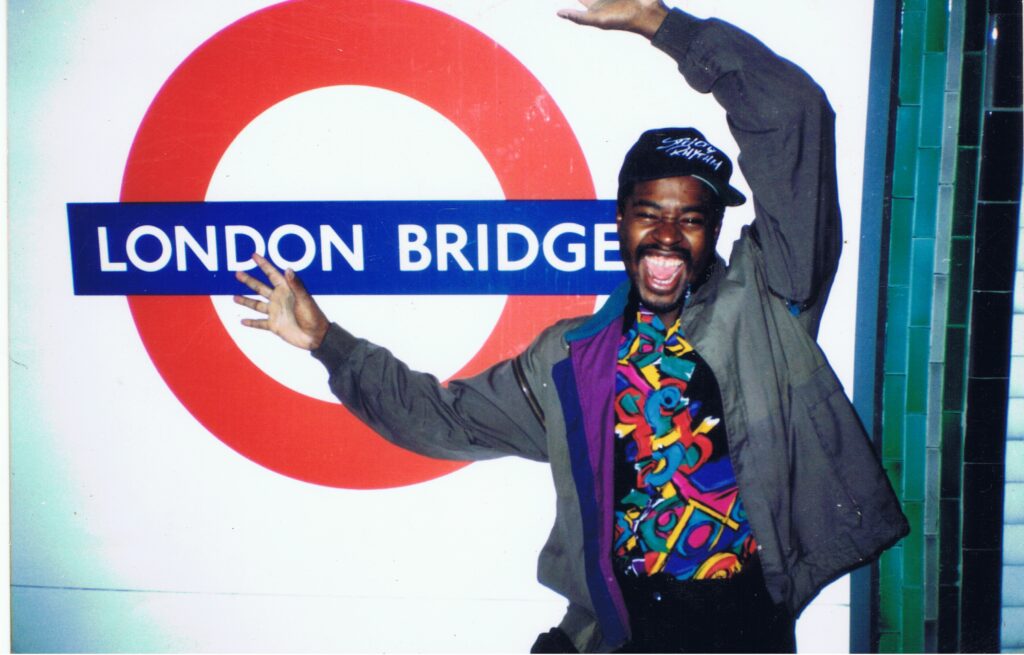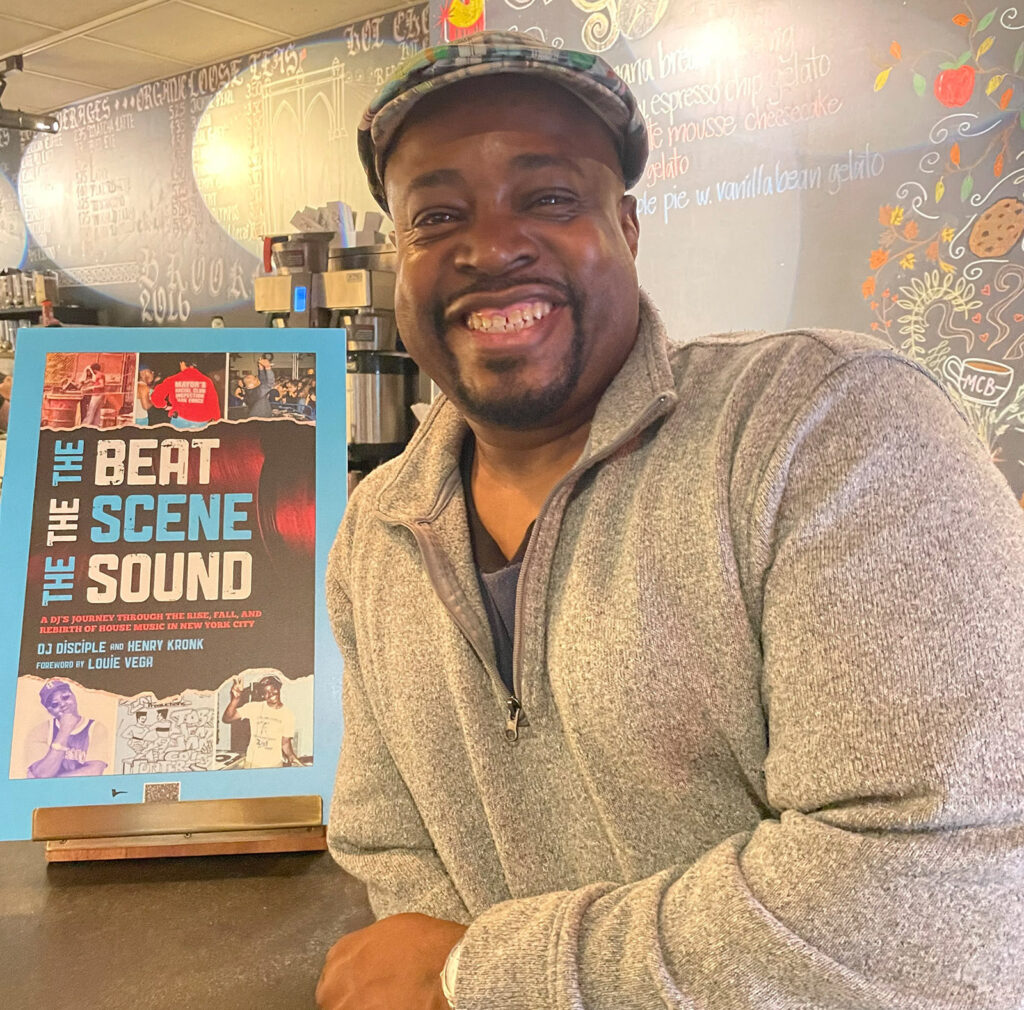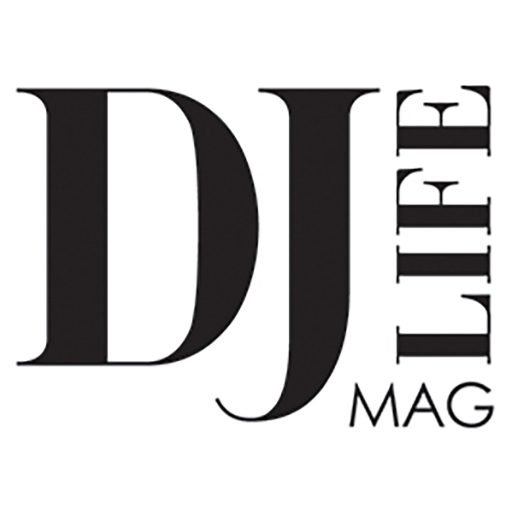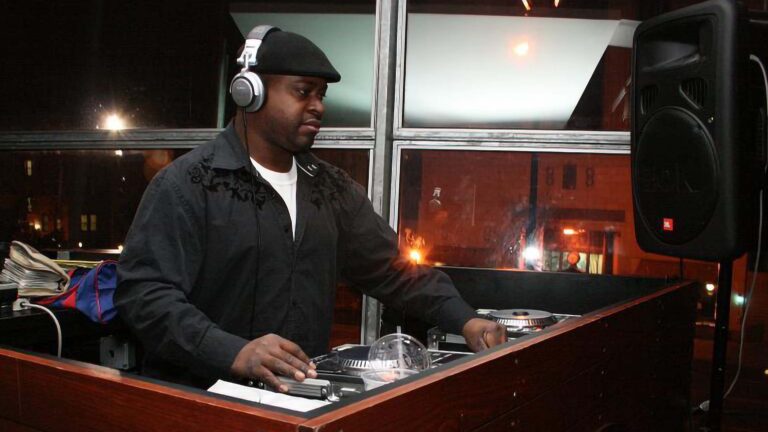As popular as house music may seem to us now, we’re not seeing too many published memoirs from the genre’s influential DJs – not just yet.
However, with “The Beat, The Scene, The Sound: A DJ’s Journey through the Rise, Fall, & Rebirth of House Music in New York City,” DJ Disciple and collaborator Henry Kronk bring a fresh approach to the musical-memoir segment by adding crucial context for the music, its practitioners, and its settings.
The book describes Disciple’s gradual ascent up the genre’s ladder – via radio shows, underground gigs, choice tracks, and clued-in booking agent Kim Benjamin – to the point where he became an in-demand global DJ/producer by the mid-’90s. It also tells how he successfully navigated all the industry’s changes – vinyl/digital, underground/open-format, nightclub politics, etc.
But moreover, the book grimly describes the backdrop of the times – ’80s and ’90s urban America, its pains and its glories – so that the music itself stands out more as a genuine revelation than any hipster-led fad. Especially in NYC, this was music with a scene that people needed – and the book makes you feel that. Additionally, it reveals music-industry challenges to Disciple’s faith and conscience that created unique conflicts. We caught up with DJ Disciple (aka David Banks) – who still spins in his native Brooklyn – to discuss his thoroughly engaging Rowman & Littlefield book.

DJ LIFE: What was the initial thrill of house music?
Disciple: I loved watching how people danced to it. “Move Your Body,” “Jack Your Body,” and “Time Marches On” were some of the Chicago house classics that I couldn’t get enough of. “Promised Land” by Joe Smooth was the first record that connected me to the inspiration and gospel side of house music. The fact that the music is morally neutral is the reason why I kept the name DJ Disciple, while still spinning house music.
DJ LIFE: For DJs, promoters, and fans of NYC’s underground club scene, what was the post-Paradise Garage phase like after it closed in 1987?
Disciple: The house music scene was an escape from a lot of the turmoil of day-to-day life. This book lays that out in the roots of NYC house and club culture. The reader gets a glimpse of what happened between the close of Paradise Garage and when other clubs sprung up and became influential. As the early ’90s came to the fore, the Underground Network parties at the Sound Factory Bar with Don Welch, Barbara Tucker, and Louie Vega became essential to house music’s survival.
DJ LIFE: Your radio show on WNYE, “New York’s Best Kept Secret,” became very influential to house jocks. How did that happen?
Disciple: Record-store culture was not enough for me after a while of being on WNYE/91.5. Strictly Rhythm’s legendary A&R chief, Gladys Pizarro, was the first person to give me a promo. I took it and started getting all the labels to give me promos, as I knew all the producers, too. Before you know it, I started premiering unreleased material on the show. I went to multiple clubs every week to listen to different DJs and added music that I heard as well. Interviewing artists and giving women a platform to spin on the show was also a big plus for me. There are archive shows on YouTube where you can hear that. After 1995, my show focused on more music that came from Europe. Besides being the first DJ to champion artists like Todd Edwards, I was the first New York DJ to play U.K. Garage on the air. Playing acetates from Grant Nelson, Tommy Musto, and Smack Productions, the show carved out a niche for itself.
DJ LIFE: You lived through several eras in clubland. Why were the Wild Pitch parties so important?
Disciple: Wild Pitch parties moved from venue to venue and carried a heavy reputation in the city as the dopest gypsy party. Wild Pitch parties have been hosted by some of the world’s most famous DJs, including Kenny Carpenter, Timmy Regisford, Tony Humphries, François K, and Louie Vega. DJs like myself made their name playing these parties. It led us to get parties in Europe and in Japan. Wild Pitch also created safe spaces where people could be themselves. It was LGBTQ+ friendly and had diverse hosts.
DJ LIFE: You had conflicting feelings about playing rave gigs. The musical vibes were great, but you didn’t like seeing so many messy kids, right?
Disciple: It was a battle and a struggle for me. I was living in a culture that went hand-in-hand with drugs, while also speaking out about the plight of the crack epidemic. It made me angry. At that time, the “3 Strikes Law” was alive and well, and it was enforced in the Farragut Houses in Brooklyn where I lived. That cut through whole communities. Compared to Farragut back then, it was like raves occurred in a different country, with different laws. Still, raves were great experiences, if you loved forward-thinking music. And the message of PLUR – Peace, Love, Unity, Respect – was an amazing culture to be involved in. Drugs aside, the simplicity of people dancing together, light, and positive vibes was my guilty pleasure.
DJ LIFE: When you began traveling to gigs, what were some of your favorite cities and clubs to play?
Disciple: Motor in Detroit, where the native sounds include disco-influenced house and techno inspired by the industrial nature of the city. I quickly learned that I didn’t have to play 130-140 beats per minute to make an impact, and it was a pleasant surprise that records like “Jaguar” by DJ Rolando and Soul Grabber were strong musical ammunition when I made my debut there.
DJ LIFE: Where else?
Disciple: San Francisco also has some of the best DJs I’ve heard. My favorite was Behrouz Nazari, who was the resident at Release. The Bay Area’s Ruby Skye was also popular. Like New York, the venue had bottle service, an expensive light show, and two dance floors. Also, Ibiza because you get to learn from so many DJs around the world. I did my hardest style of house music for 3,000 people in Montreal at my residency at Red-Lite. It was the last place I played that felt like a rave in the club. The experience was invigorating. I love San Diego, Denver, and Dallas.
DJ LIFE: What’s the best part of being a global DJ?
Disciple: Seeing things for the first time that you’ve never seen before. If you’re lucky, you get to take in some of the cultures, some of which we may not have known about. Traveling around the world made me want to serve my community more.
DJ LIFE: What’s the difficult?
Disciple: When the specs are not in order. When flights are delayed or cancel. When your flight is so long, but your DJ set is so short. When the DJ you are billed with uses sabotaging tactics. When you don’t connect with the promoter that booked you. When a fan starts making things weird for you.
DJ LIFE: You’ve spun in every DJ format now – is there a favorite format?
Disciple: Vinyl because it was more valued and had more life. I recently played an all-vinyl set at the Love Vinyl book-signing I did in the U.K. and got some a great response. There’s something magical in mixing vinyl.
DJ LIFE: In your mind, what makes a great DJ?
Disciple: Knowing the audience you play for.
DJ LIFE: Which DJs taught you the most?
Disciple: Johnny Dynell, Roman Ricardo, Naeem Johnson, and DJ Camacho influenced me on my musical journey. Joey Llanos, David Depino, Louie Vega, and Timmy Regisford gave you a great blueprint on how an eight- to-10-hour DJ journey works. Internationally, Paul “Trouble” Anderson, Derrick Carter, Mark Farina, Garth, Pete Tong, and Danny Rampling were great DJs I could hear on the radio or listen to them mix live to know where they were going.
DJ LIFE: What did they teach you?
Disciple: They taught me to think outside the box. Some places you play are anthemic, while others are more underground. The record shops were your nose to the ground to find out what works in clubs. Now it’s YouTube or even Soundcloud or Mixcloud. Doing homework on listening to their mixes always goes a long way with me. No matter where you are as a DJ, you can always get better.



